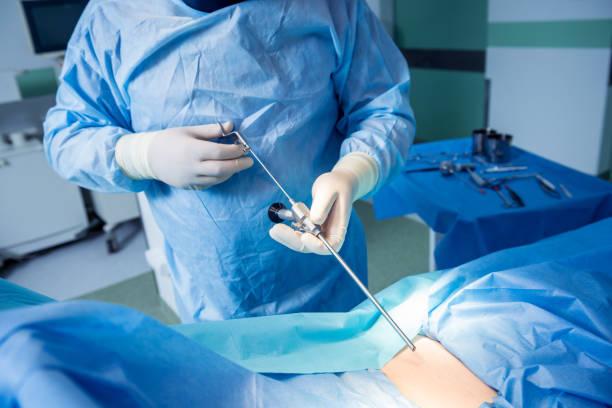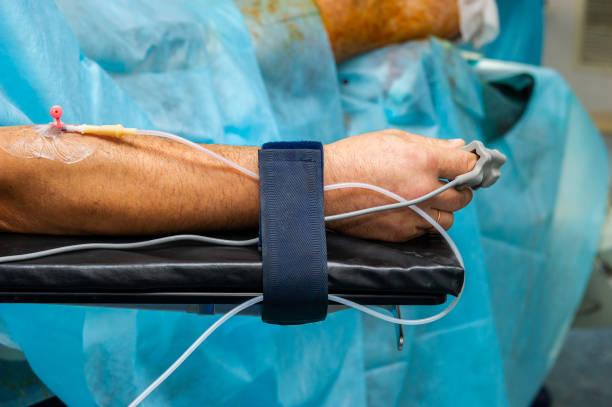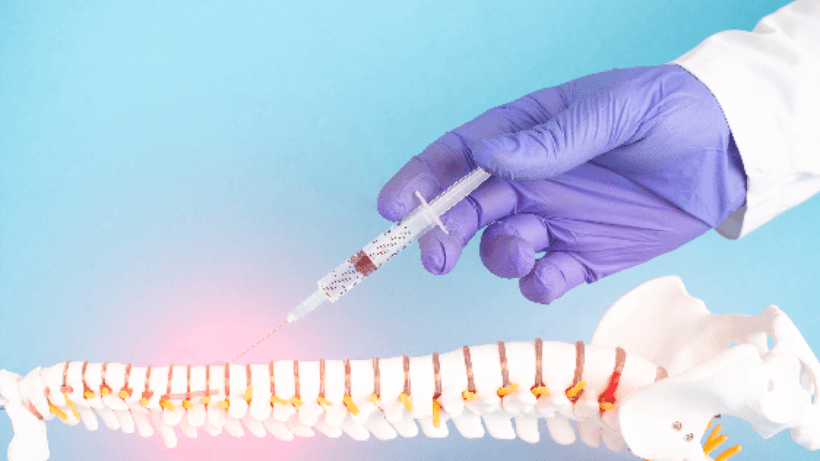
Understanding Microdiscectomy Risks: What You Need to Know
20 Apr, 2024
 Healthtrip
HealthtripConsidering microdiscectomy surgery to alleviate back pain? It's essential to weigh the benefits against the potential microdiscectomy risks. This minimally invasive procedure offers relief from the pressure a herniated disc places on spinal nerves in the lower back, typically recommended after more conservative treatments haven't provided relief. Understanding microdiscectomy, including what it entails and why it might be suggested, is your first step towards making an informed decision.
This article delves into microdiscectomy risks, shedding light on the procedure itself, potential complications, and the recovery process. Recognizing these risks and the recovery expectations can better prepare you for post-surgery life. Additionally, exploring the benefits of microdiscectomy can help balance your perspective, ensuring you're fully informed before proceeding.
Most popular procedures in India
Understanding the Procedure to Understand Microdiscectomy Risks
Microdiscectomy is a minimally invasive surgical procedure specifically designed to address the discomfort and mobility issues caused by herniated discs. This surgery involves the precise removal of problematic disc fragments, bone, and ligaments that are compressing spinal nerves, particularly in the lumbar region, which is the most common site for this procedure. Here’s a straightforward breakdown of what the process entails:
Wellness Treatments
Give yourself the time to relax
Lowest Prices Guaranteed!

Lowest Prices Guaranteed!
Preparation and Imaging: Prior to the surgery, imaging techniques like X-rays are utilized to accurately pinpoint the affected area, ensuring the surgery is performed on the correct site.
Surgical Techniques: The procedure is performed using one of three techniques – midline, tubular, or endoscopic microdiscectomy. Each technique is chosen based on the specific needs and condition of the patient, aiming to minimize tissue disruption and enhance recovery time.
Objective and Outcome: The primary goal of microdiscectomy is to alleviate pain caused by nerve compression and improve the patient's mobility. Typically lasting between 30 to 60 minutes, the surgery has a high success rate with many patients experiencing significant relief and satisfaction post-procedure.
This surgery is generally recommended after other conservative treatments, such as physical therapy and medications, have not yielded sufficient relief, making it a vital option for those suffering from persistent and debilitating symptoms.
What is Involved in Microdiscectomy Surgery
Microdiscectomy surgery is typically carried out by skilled orthopedic surgeons or neurosurgeons, utilizing advanced techniques to ensure precision and minimize recovery time. Here's what you can expect during the procedure:
Preparation and Anesthesia: You'll be given general anesthesia, which means you'll be asleep and won't feel pain during the surgery. The area of your back where the incision will be made is cleaned and prepped.
Surgical Procedure:
A small incision (1 to 1.5 inches) is made in the midline of your lower back.
Muscles and tissues are carefully moved aside to access the spine, often with the help of a microscope for better visibility.
The surgeon performs a laminotomy or laminectomy if necessary to reach the herniated disc.
Using specialized instruments, the herniated disc material pressing on the nerve is removed. This includes tiny fragments of disc, bone, and ligaments.
Postoperative Care:
The incision is sutured, and you are moved to a recovery area where your vitals are monitored.
Most patients can go home the same day, although an overnight stay might be required for some based on medical conditions.
You'll receive instructions on post-surgical care, including medications for pain and muscle relaxation.
This minimally invasive approach not only reduces the trauma to surrounding tissues but also allows for a quicker recovery compared to traditional open surgery.
Microdiscectomy Risks and Complications
While microdiscectomy is generally regarded as a safe procedure, it is essential to be aware of the potential risks and complications that could arise. Here’s a breakdown of what you might expect:
Dural Tear: Occurring in about 4% of surgeries, a tear in the dura mater can lead to cerebrospinal fluid leaks, potentially causing headaches, nausea, or vomiting. This is typically repaired during surgery with sutures or a collagen patch.
Nerve Damage: Although rare, affecting about 1% to 2% of cases, nerve damage can result in weakness, numbness, or even long-term complications depending on the severity of the injury.
Infection and Bleeding: Post-operative infections and bleeding are possible, though they occur infrequently. Proper surgical techniques and postoperative care are critical to minimize these risks.
Additional considerations include the possibility of blood clots, pneumonia, or persistent pain after the surgery. Patient-related factors such as age, obesity, and lifestyle choices like smoking can also influence the outcome. It’s crucial to discuss these risks with your surgeon to understand how they might apply to your specific situation and to learn about their personal success rates and patient satisfaction following the procedures they’ve performed.
Recovery After Microdiscectomy
Recovery after a microdiscectomy is often swift, with most patients experiencing significant pain relief almost immediately. Here’s a detailed guide to help you navigate the post-operative period:
Immediate Postoperative Care:
Day of Surgery: Patients typically leave the hospital a few hours post-surgery. Pain management is crucial; you might receive opioids, but many taper off within a few days.
First Week: Pain can be intense, especially in the lower back. It’s essential to have support for household activities and avoid strenuous movements.
Gradual Return to Routine:
First 2 Weeks: Light activities like walking are encouraged. Driving and work may resume depending on the nature of your job and how you feel.
Weeks 3 to 6: Begin a physical therapy program to strengthen back and abdominal muscles, enhancing flexibility and posture. Avoid bending and heavy lifting.
Long-term Recovery:
6 Weeks and Beyond: Regular activities, including work and hobbies, can generally be resumed. Strenuous labor and contact sports should wait until after 12 weeks.
Monitoring Progress: Regular check-ups will track your healing, and any persistent pain or new symptoms should be reported to your doctor.
By adhering to these guidelines and your healthcare provider’s advice, you can expect a smooth recovery, returning to your daily activities without pain or significant limitations.
Benefits of Microdiscectomy
Microdiscectomy, a minimally invasive surgical procedure, offers various benefits that significantly enhance the quality of life for patients suffering from herniated discs. Here’s a closer look at the advantages:
Minimally Invasive Approach:
Reduces potential complications such as bleeding and infection.
Shortens hospital stay, often allowing discharge on the same day.
Effective Pain Relief:
High success rate in alleviating symptoms of sciatica and herniated disc pain.
Approximately 80% of patients experience significant leg pain relief, and about 77% report alleviation of back pain.
Improved Functionality and Mobility:
Aims to abolish or decrease leg pain, enhancing mobility in the back and legs.
Helps restore normal functions like sitting, standing, and walking, improving overall quality of life.
These benefits, coupled with a high patient satisfaction rate and a quick recovery period, make microdiscectomy a preferred choice for those struggling with persistent and debilitating disc-related symptoms.
Conclusion
Navigating through the comprehensive guide on microdiscectomy, we have explored the intricate details from what the procedure entails to the potential microdiscectomy risks as well as benefits. Acknowledging both the high success rates in alleviating symptoms and potential complications underscores the importance of this surgical intervention for those struggling with persistent lumbar disc issues. The significance of being well-informed cannot be overstated, as it empowers patients to weigh the benefits against the risks in consultation with their healthcare provider, thereby making a decision that aligns with their health and well-being.
The journey through understanding microdiscectomy does not conclude with knowing the procedure and its immediate aftermath but extends to recognizing the importance of a diligent recovery process and the positive impact it holds on long-term recovery and quality of life. Emphasizing patient education, careful surgical planning, and adherence to postoperative care, microdiscectomy stands as a testament to modern surgical advancements, offering hope and improved functionality to many. As we reflect on the information provided, the overarching narrative encourages readers toward an informed, healthful decision-making process, highlighting the procedure's role in restoring life's quality and vibrancy.
Turn to HealthTrip.com.for personalized assistance with your microdiscectomy surgery. Through the platform, connect with trusted healthcare providers worldwide, and find the right expertise for your needs. From cost comparisons to travel arrangements, HealthTrip.com simplifies the process, guiding you towards a successful and stress-free medical journey.
Related Blogs

Exploring the Side Effects of Microdiscectomy Surgery: What You Need to Know
Understanding microdiscectomy surgery effects and how you are supposed to

Navigating Microdiscectomy Recovery: Understanding the Risks and Challenges
Embarking on microdiscectomy recovery can be a journey filled with

Exploring Microdiscectomy Surgery Costs in Thailand: What You Need to Know
While exploring the microdiscectomy surgery cost in Thailand, you'll find

When Should You Opt for Microdiscectomy Surgery?
Overview If you’re suffering from severe long-term leg pain, and even










